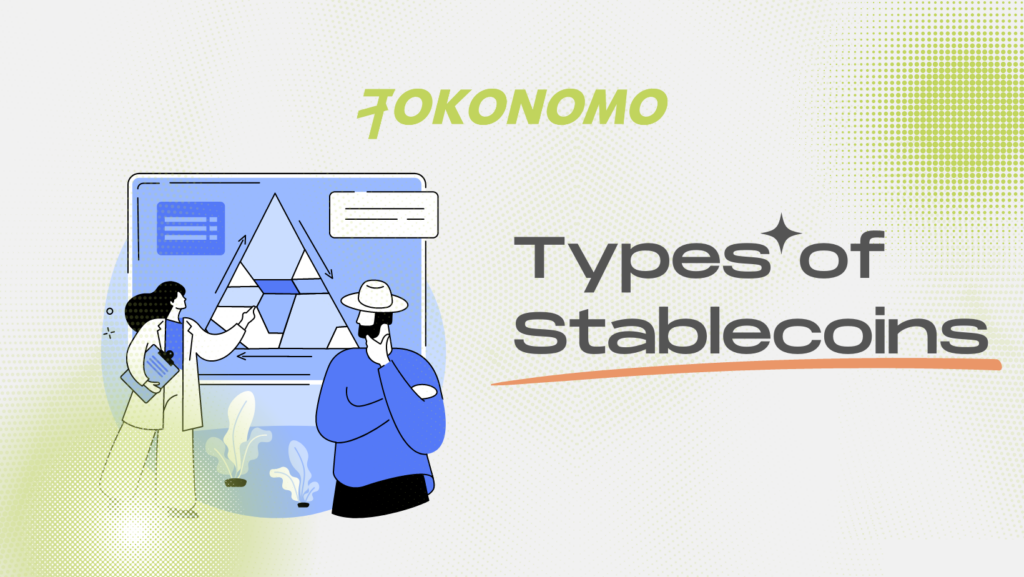Cryptocurrencies are known for their volatility, which makes them difficult to use as a medium of exchange and store of value. This is where stablecoins come in. Stablecoins are cryptocurrencies that are designed to maintain a stable value relative to a particular asset or a basket of assets. In this article, we will discuss what stablecoins are, why they are used, their advantages, types, challenges, and their relationship with decentralized finance (DeFi).
What are Stablecoins?


Stablecoins are cryptocurrencies that are pegged to the value of an underlying asset, such as a fiat currency, gold, or another cryptocurrency. The goal of stablecoins is to provide the stability and reliability of traditional fiat currencies, while leveraging the advantages of cryptocurrencies, such as fast and cheap transactions, global accessibility, and transparency.
Why Use Stablecoins?
Stablecoins are used for various purposes, including but not limited to:
Facilitating cryptocurrency trading: Since stablecoins offer a stable value, they are often used as a trading pair against other cryptocurrencies, such as Bitcoin and Ethereum. This allows traders to hedge against market volatility and avoid the need to convert their cryptocurrency holdings to fiat currencies.
Remittances: Stablecoins can be used to transfer funds across borders quickly and cheaply, without the need for intermediaries like banks and remittance services.
Store of value: Some stablecoins, such as USDC and Tether, are pegged to the US dollar, which makes them a reliable store of value in a volatile cryptocurrency market.
Decentralized finance: Stablecoins are an integral part of the decentralized finance ecosystem, allowing users to borrow, lend, and trade cryptocurrencies without relying on traditional financial institutions.
Why stablecoins are stable?
Stablecoins maintain their stability through various mechanisms, depending on the type of stablecoin. Some stablecoins are collateralized, which means that they are backed by a reserve of fiat currency, gold, or cryptocurrency. Other stablecoins are algorithmic, which means that their value is maintained through smart contracts and algorithms that adjust the supply of the stablecoin based on market demand.
Advantages of Stablecoins
The advantages of stablecoins include:
Stability: Stablecoins offer the stability and predictability of traditional fiat currencies, making them a reliable store of value and medium of exchange.
Accessibility: Stablecoins are accessible to anyone with an internet connection, regardless of their location or financial status.
Speed: Stablecoin transactions are fast and cheap, making them ideal for remittances and other peer-to-peer transactions.
Transparency: Most stablecoins are built on a blockchain, which provides transparency and immutability, allowing users to verify transactions and monitor the supply of the stablecoin.
Types of Stablecoins


There are three main types of stablecoins:
Fiat-collateralized Stablecoins
Fiat-collateralized stablecoins are backed by a reserve of fiat currency, such as the US dollar, euro, or yen. The stablecoin issuer holds the reserve in a bank account or a trust, and issues the stablecoin in exchange for the fiat currency. Examples of fiat-collateralized stablecoins include USDC, Tether, and Paxos Standard.
Cryptocurrency-collateralized Stablecoins
Cryptocurrency-collateralized stablecoins are backed by a reserve of another cryptocurrency, such as Bitcoin or Ethereum. The stablecoin issuer holds the reserve in a smart contract, and issues the stablecoin in exchange for the cryptocurrency. Examples of cryptocurrency-collateralized stablecoins include Dai, BitUSD, and sUSD.
Non-collateralized Stablecoins
Non-collateralized stablecoins, also known as algorithmic stablecoins, maintain their stability through algorithms and smart contracts, rather than through a reserve of assets. These stablecoins use a variety of mechanisms to maintain their peg, such as adjusting the supply based on demand, or using an algorithm that incentivizes users to buy or sell the stablecoin. Examples of non-collateralized stablecoins include Ampleforth, Basis Cash, and Empty Set Dollar.
Challenges of Stablecoins
Stablecoins face several challenges, including:
Centralization: Many stablecoins are centralized, meaning that they are controlled by a single entity or a small group of entities. This makes them vulnerable to censorship and manipulation.
Regulatory uncertainty: Stablecoins operate in a regulatory grey area, which makes it difficult for them to gain widespread adoption and legitimacy.
Security risks: Stablecoins are vulnerable to hacks and other security risks, which could result in the loss of user funds.
Depegging: Stablecoins are not immune to depegging, which can happen due to various factors, such as market volatility, regulatory changes, or operational issues.
Why stablecoins depeg?


Stablecoins can depeg for various reasons, including:
Market volatility: Stablecoins are vulnerable to market volatility, which can cause their value to fluctuate and potentially depeg.
Regulatory changes: Changes in regulations or legal challenges could impact the stability of stablecoins and potentially depeg them.
Operational issues: Stablecoins are not immune to operational issues, such as technical glitches or fraudulent activities, which can cause their value to depeg.
Stablecoins and DeFi
Stablecoins play a vital role in the decentralized finance (DeFi) ecosystem, which allows users to borrow, lend, and trade cryptocurrencies without relying on traditional financial institutions. Stablecoins are used as collateral for borrowing and lending, and as a medium of exchange for trading various cryptocurrencies. DeFi platforms, such as Uniswap and Aave, rely heavily on stablecoins for their operations.
Yield farming stablecoins
Yield farming is a popular DeFi practice that involves staking or lending cryptocurrency in exchange for rewards, such as interest, governance tokens, or other incentives. Stablecoins are often used for yield farming, as they provide a stable and predictable return. Yield farming stablecoins is a relatively low-risk strategy that allows users to earn a steady income on their cryptocurrency holdings.
Stablecoins with low fees
Stablecoins with low fees are becoming increasingly popular, as they offer a cost-effective way to transfer value across borders or between cryptocurrency wallets. Examples of stablecoins with low fees include USDT (Tether) and BUSD (Binance USD), which charge minimal transaction fees compared to other stablecoins.
Stablecoins vs CBDC


Central bank digital currencies (CBDCs) are digital versions of traditional fiat currencies that are issued and backed by central banks. CBDCs are not the same as stablecoins, as they are issued by a central authority and have legal tender status. CBDCs are expected to play a vital role in the future of money and could potentially replace cash and other forms of payment. However, stablecoins offer several advantages over CBDCs, such as global accessibility, fast and cheap transactions, and transparency.
Conclusion
Stablecoins offer a stable and reliable way to store value and transact in a volatile cryptocurrency market. They have several advantages over traditional fiat currencies and play a vital role in the decentralized finance ecosystem. While stablecoins face several challenges, including regulatory uncertainty and security risks, they are expected to continue to gain adoption and play a vital role in the future of finance. As the use cases for stablecoins continue to grow, it is likely that we will see an increase in the number of stablecoin offerings and a shift towards more decentralized and transparent models.
Overall, stablecoins offer a unique and promising solution to the challenges of volatility and liquidity in the cryptocurrency market. They provide a stable and reliable way to store and transfer value, and offer several advantages over traditional fiat currencies and CBDCs. As the demand for stablecoins continues to grow, we can expect to see continued innovation in this space, with new and innovative models emerging to meet the needs of users and the broader cryptocurrency ecosystem.











